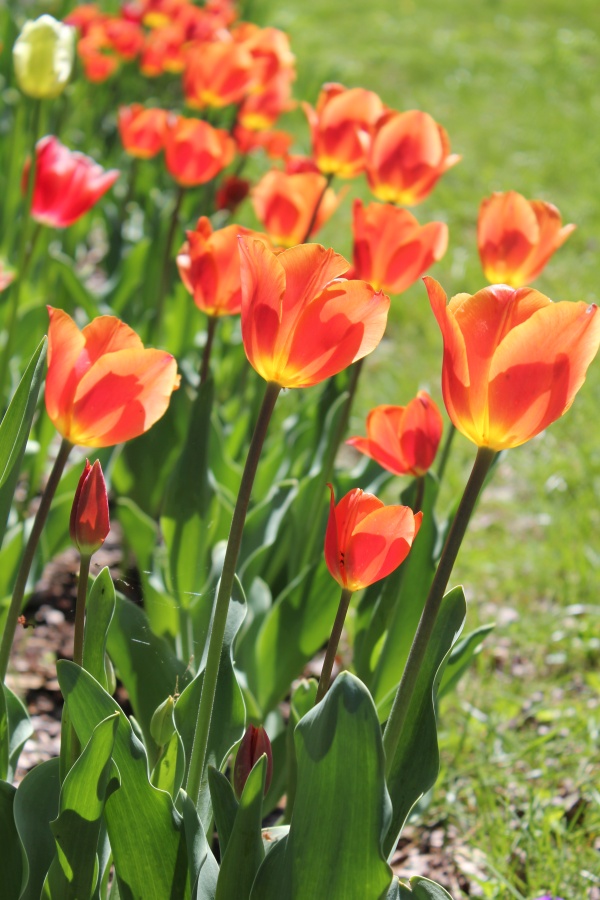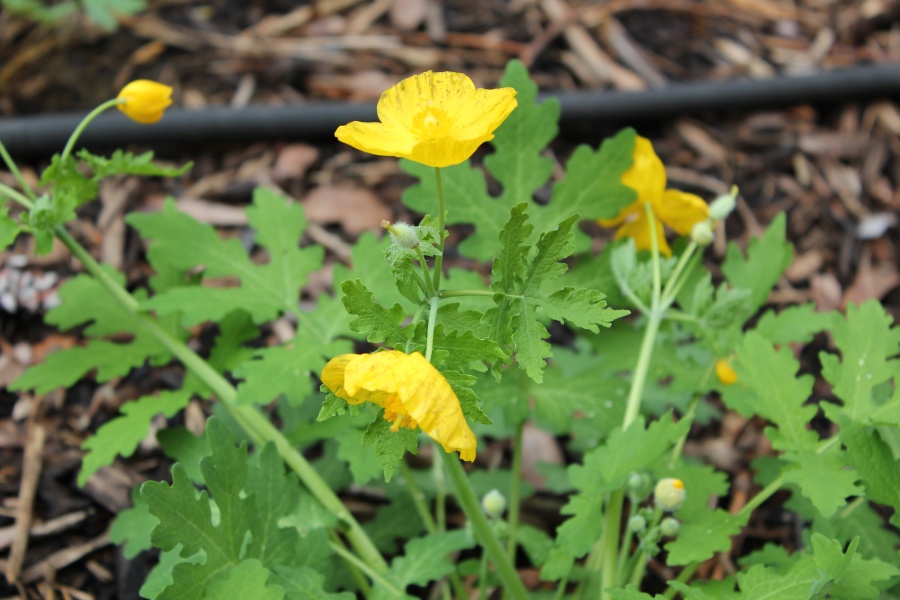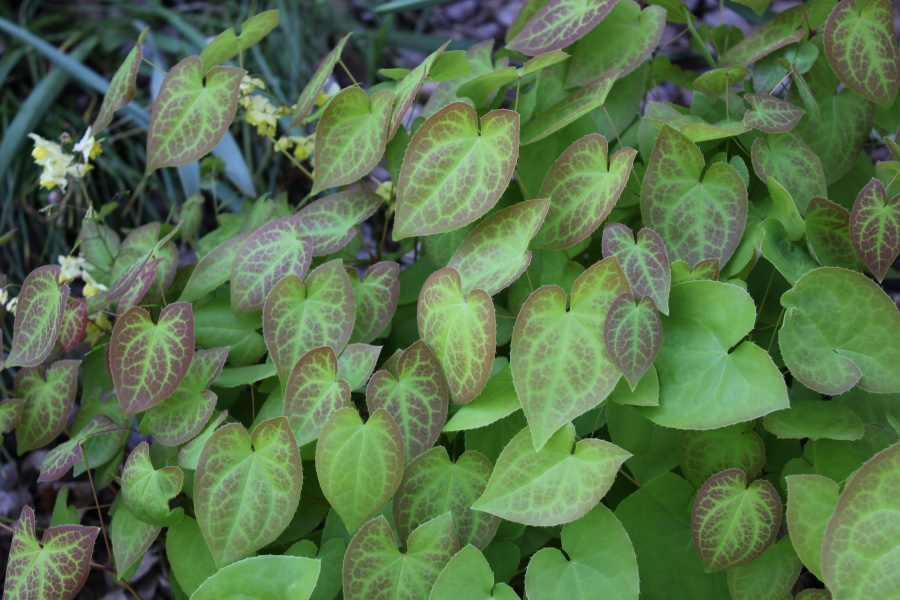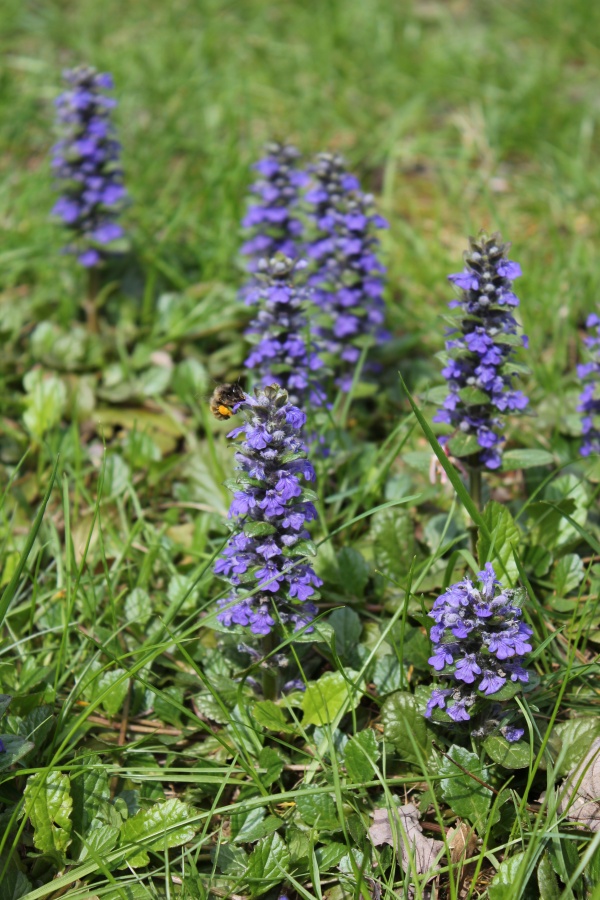
Red hot poker in front of the pyramid trellis.

Lamb’s ear from a neighbor, planted just ahead of a rare rain.
An unforeseen benefit of having a toddler who likes to be outdoors has been an increase in evening gardening. In the past I’ve been pretty much fed up with working in the yard by this time of year; once it gets hot I like to hang out inside and look at my flowers through the window. Hanging out inside is not a recipe for relaxation with the sprout, though, so we head outside after nap time. Lately we’ve been staying in the yard rather than going to the park, because the porch now stores such enticements as chalk, balls, bubbles, and the extremely popular trowel, all of which makes it difficult to get very far away from the front door. And, as soon as we get outside I am exhorted to “Dig, dig, dig!” Having already moved and planted nearly everything that needs to be moved and planted this spring I am left with weeding. So, all of the front beds are edged and mulched (and look quite nice, if I do say so myself) and we have progressed to weeding the backyard beds. Usually the weeding of the backyard is an annual Herculean task that I delegate to my partner and a very kind friend and which they typically tackle on one very long Saturday round about September or October. Since we don’t have much of anything planted in the backyard (due to the fence that needs to be replaced and my determination to minimize the plants that will need to be relocated when that happens) “weeding” really means digging out the annual encroachment of liriope, ivy, and violets from the sides of the yard that have been successfully cleared in previous years and now languish under a variably thick layer of leaves.
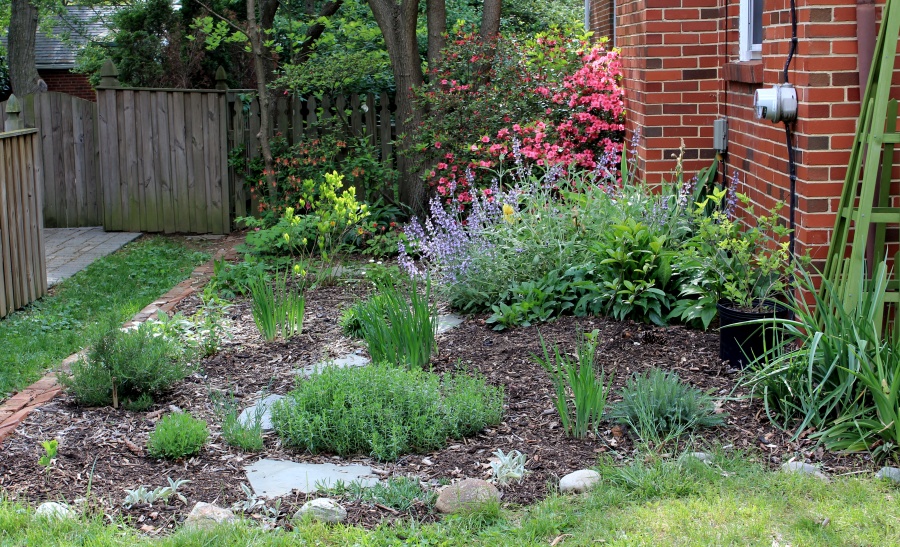
Our new side garden.
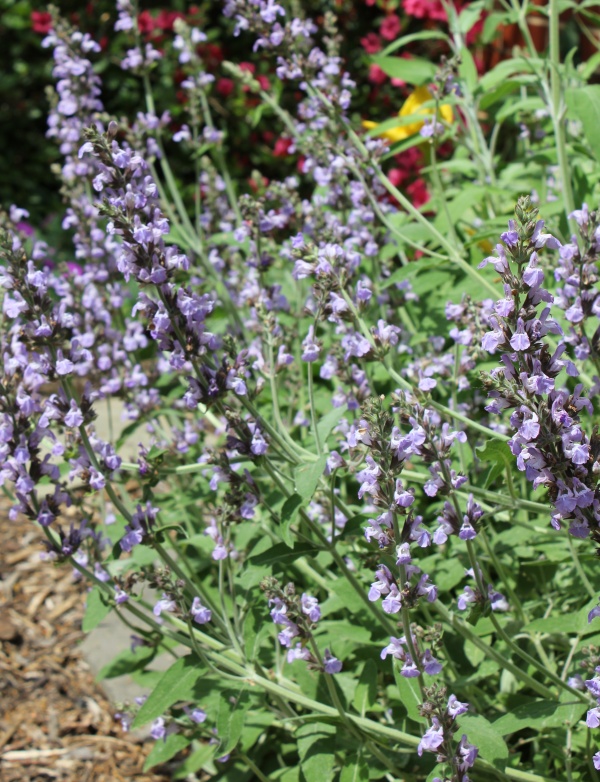
The enormous sage, before it got a fungus and then the axe.
This year, however, the presence of my miniature task-master has led me to seek out opportunities for digging and pruning lest the desire to “Dig, dig, dig!” lead to the uprooting of all the herbs, bulbs, and perennials I’ve worked so hard to establish over the past few years. As a result, the peony “bed” (aka strip along the back fence where I plunked them for lack of a better spot at the time) has been weeded and mulched (this last for the first time ever). The area around one of the roses has also been weeded and mulched, the encroaching dwarf almond has been cut back, and the ornamental quince around the corner of the house has been pruned (that was very exciting for the sprout, I fielded requests for “more cut!” for days after that one). After all this I find myself in the odd position of having a fairly well-maintained garden early in the season, leaving me with very little choice except to proceed with digging out the liriope in the back side yard to clear space to plant my new shrubs, a task I would have sworn would be left for partner and friend to undertake sometime in September or October.
Some of my hesitation around this project is due to the fact that I still don’t know exactly which shrubs are going to go where. I have four shrubs that need homes (spicebush, ninebark, beautyberry, and inkberry), and juggling the sun/shade needs is proving a bit tricky. Mostly, though, the tricky part is that I want to be able to see all the shrubs from inside the house because they have been carefully selected to attract wildlife. Oh, and the small complicating detail that two of the spots for the new shrubs are occupied by old shrubs that I want to get rid of and my partner wants to keep. There is that. However, we both agree that regardless of the precise shrub placement, the liriope and other weeds need to be dug out of the side yard so that it can be turned into a mulched area with a path (or just a few stepping stones) which will not have to be mown or weeded very much at all in future years. That alone will require hours of work before we’re even close to needing to resolve our shrub location dispute. My proposal is: get rid of the dwarf almond on the back corner of the house and replace it with the beautyberry (or better yet the ninebark, given how big that one gets); get rid of the forsythia (to which I am incredibly allergic) on the other back corner of the house and replace it with a rain barrel (already purchased and waiting in the garage); get rid of the white lilac (already offered to a friend) and replace it with the spicebush; get rid of the sassafrass sprouts (already slated to be donated to the town park) and replace them with the inkberry; and fit the fourth shrub in somewhere once I see how the rest of this is coming along.
Really, if I’m honest, the dispute is not so much about where all these shrubs will go but more about how exactly we arrived at the current backlog of shrubs waiting to be planted somewhere in the yard. On that point, I got nuthin.
